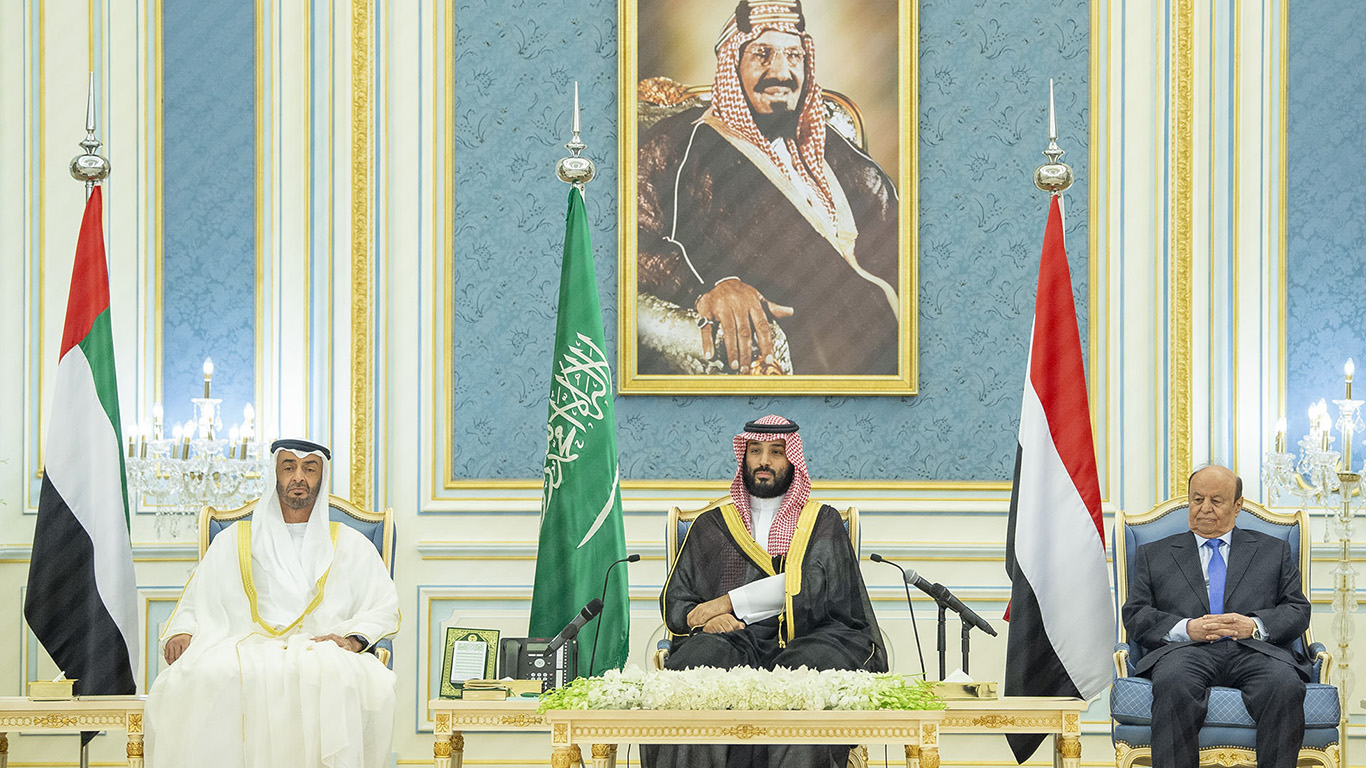When describing increased Al Qaeda activity in Yemen as “deeply worrying” in his statement, the Office of the United Nations High Commissioner for Human Rights (OHCHR) spokesperson Ravina Shamdasani was drawing attention to the faction’s ongoing presence in the country following a deadly attack on government forces in August. Yet, even though a recent peace deal to unify two of Yemen’s warring sides has been forged, the conditions which initially gave rise to Al Qaeda’s presence in Yemen have not been fully addressed.
Yemen’s conflict took another drastic turn in August, one which risked an increase in extremist activity, such as the Al Qaeda attack on government forces. When the United Arab Emirates (UAE)-backed separatist Southern Transitional Council (STC) staged a coup on Aden, seizing the city from Yemeni government control, it risked pushing Yemen into an even deeper conflict, particularly as Al Qaeda was showing signs of resurgence at the time.
Al Qaeda in the Arabian Peninsula (AQAP), a merger of the Saudi and Yemeni branches from 2009, is believed to be Al Qaeda’s strongest franchise. AQAP has flourished amid such instability in Yemen, exploiting power vacuums in order to expand its own presence.
The security forces of the post-revolution government of Abdrabbuh Mansur Hadi already contained a faction before AQAP later expanded after the September 2014 Houthi insurgency, gaining more territory following the Saudi-led intervention in March 2015.
Despite the so-called Islamic State (IS) operating in Yemen, with clashes between the two organisations in recent months, AQAP still boasts a much stronger force. Latest estimates put the number of fighters at 6000-7000, compared to just a few hundred IS members. Nonetheless, IS has still inflicted casualties on Al Qaeda.
The southern conflict between the STC and Hadi forces had given AQAP more room to expand and in September it recaptured part of the Abyan province, an area which it had been jostling over throughout the war. Al Qaeda currently also retains pockets of control across Yemen’s south where, despite USA-backed efforts from the UAE to contain rather than defeat the faction, it still retains a presence in Abyan, Hadramawt and Shabwa.
A deal penned in Riyadh this November to unify the Hadi government and the STC into a power-sharing regime, has now raised international hopes that more stability will follow.
Though this has temporarily averted a long-term conflict, it is not a long-term solution for bringing necessary stability to the country. As we have seen in previous situations, Al Qaeda has sometimes gained support in areas they have operated in, after providing basic services like water, electricity and fuel, along with security and some form of governance.
Just two states, Saudi Arabia and the UAE, have imposed the recent unification deal as a top-down measure, showing that they only seek to secure their own interests, rather than that of Yemenis. The STC and Hadi government still have differences, and local Yemenis who are concerned about these ongoing tensions fear that the deal may not hold.
Should the STC and Hadi’s differences erupt into further hostilities, Al Qaeda will be primed to take advantage of the chaos. Analysts have observed that this echoes past failed unification efforts, such as in 2014, which led to a Houthi insurgency and subsequently an AQAP expansion.
Even while the deal holds, Yemen’s destroyed state is not being restored effectively. Though the Saudi Development and Reconstruction Program recently promised new projects for Yemen, previous efforts have had few tangible benefits for Yemeni society, and have instead served as a tool to secure Saudi influence in Yemen.
Al Qaeda benefits from the lack of government services and corruption in Yemen, even winning support from Yemenis for providing more security. While Yemen’s state is still neglected, without serious international efforts to restore the country’s infrastructure, AQAP can stage further attacks and even jostle for more territory.
Even with a stronger government presence, AQAP has attacked government forces throughout the conflict, including a deadly attack killing 19 in August. This means that Saudi Arabia’s attempts to reimpose its ideal candidate, without necessary stabilizing measures, will likely trigger future backlashes from the militant faction.
Should security forces try to contain AQAP, they could risk hurting local populations further, and therefore aggravating the conditions for AQAP’s prosperity, just as efforts by previous Yemeni governments under Hadi and former president Ali Abdullah Saleh had done.
Meanwhile, the deal seeks to unify Saudi and Emirati-backed forces against the Houthis despite the fact that previously such focus on defeating the Houthis having benefited AQAP. Some UAE-backed militias have had ties with Al Qaeda, such as Abu al-Abbas, a UAE-backed warlord in Taiz who is listed on the US terrorism list for his ties to Al Qaeda. Associated Press reported that AQAP fighters had actually been recruited to fight alongside the Saudi-led coalition against the Houthis.
As the Houthi rebels were not included in the recent peace talks, this could trigger further confrontations from the faction; which could in turn lead to a renewed conflict where AQAP could once again flourish.
Furthermore, despite claiming a military victory against AQAP in Mukalla in 2016, the UAE had in fact simply paid Al Qaeda to safely withdraw. Clearly the UAE merely seeks to contain the faction, as long as it does not disrupt Emirati interests.
AQAP’s ongoing presence has also enabled the UAE to operate in the south under the guise of counterterrorism. The UAE Armed Forces Command said in a statement regarding its withdrawal from Aden, that it would retain a military presence across southern regions to “combat terrorism”. While this suggests AQAP could be a target of its ongoing operations, its militias are rather preoccupied with maximizing Emirati influence in Socotra and other southern provinces after the deal forced them out of Aden, indicating that stability is not a priority for Emirati-backed forces.
AQAP has staged attacks against the STC’s military wing, the Security Belt, despite its friendly relations with other UAE-aligned militias. They may increase their attacks against the separatists, feeling rising STC control over the south could threaten their own influence. AQAP could still launch attacks from its southern territories, which would further destabilize Yemen, while disrupting future peace efforts.
As the European Union and other international actors have praised the Saudi-backed deal as a step towards peace, it indicates they have become complacent about the instability which gave rise to the faction.
Since Saudi Arabia and the UAE are not preoccupied with restoring genuine stability to Yemen, this will benefit AQAP. More concentrated international peace and humanitarian efforts must be pursued in order to create genuine stability in Yemen. A more representative peace deal is essential, along with restoring Yemen’s infrastructure and reducing corruption in a future government. While this would require long-term steps, it is vital in containing such extremist factions as AQAP.


 Jonathan Fenton-Harvey
Jonathan Fenton-Harvey